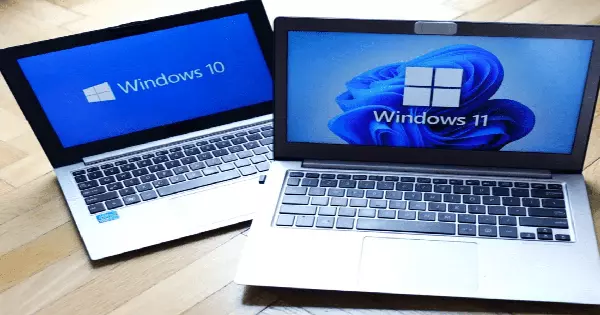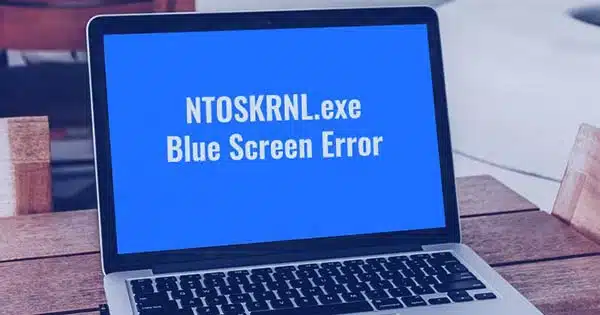Occasionally occurring “blue screen of death” (BSOD) faults are a source of worry for Windows users, who must deal with them and resolve them. One such BSOD that users of Windows 10 and 11 are known to see is the “ntoskrnl.exe” problem. This tutorial explains the potential reasons for this problem and offers suggestions for fixing it.
The fundamental Windows processes are involved with the “ntoskrnl.exe” problem. Truth be told, “ntoskrnl.exe” actually stands for “Windows NT operating system kernel executable.” It is in charge of important background tasks that guarantee your computer will operate normally. Memory management is one of “ntoskrnl.exe’s” key responsibilities, therefore any problems with your RAM might result in a “ntoskrnl.exe” BSOD.
Other causes of this error include faulty Windows files, antivirus application incompatibilities, and driver problems. A few remedies are provided below to assist you in locating the problem’s source and permanently eradicating it from your PC.

Check RAM for Errors: The integrity of your computer memory may be compromised over time, leading to BSOD issues like the ntoskrnl.exe error. Test your RAM for problems to rule that out as a problem before attempting the other remedies. Windows’ built-in memory testing feature, Windows Memory Diagnostic, helps find simple RAM problems.
To find more serious problems with your system memory, you may also utilize more stringent programs such as HCI MemTest and MemTest86. Finally, physically inspect your RAM to see whether a particular DIMM is the source of the problem.
Disable Overclocking: If the system memory has been checked out as the root cause, overclocking may be the culprit behind the “ntoskrnl.exe” problem. The problem will probably go away if you reset your RAM to factory settings if you overclocked it. Even if you’ve just overclocked your CPU, the higher voltages and frequency might be affecting stability and resulting in the specific BSOD.
See whether the issue is resolved by resetting all of your components, including the RAM, CPU, and GPU, to their default settings. If not, go to the next item in the list of fixes.
Investigate Driver Issues: BSODs caused by conflicts in your drivers are extremely prevalent since they might bring a system crash. The system RAM may be directly impacted by these problems, leading to “ntoskrnl.exe” errors.
Finding the source of the issue could be simpler if a device’s drivers have recently been updated or if a new device has been added. Try reverting the device’s drivers to see if the problem goes away. You’ll need to look further if it doesn’t.
You can roll back the driver for that device to try to repair the problem if you can link the BSOD to a particular program or device that is running at the time the issue occurs. To rule out any out-of-date drivers as the cause of the issue, you may also try reinstalling the drivers.
By starting your computer in Safe Mode, you can find the specific driver responsible for the issue in another method. If you can successfully boot to the desktop, you can find the problematic driver by running each application separately to observe which one begins to produce issues.
Run a Microsoft Defender Scan: Malware infestation is unavoidable, and your computer can still become infected even if you have an antivirus application running. Malware is a potential cause of the “ntoskrnl.exe” issue since it has the ability to damage crucial system files. Use Windows’ built-in Microsoft Defender to run a thorough check of your machine to make sure it is clear of viruses.
To rule out malware infection as the underlying cause of the “ntoskrnl.exe” BSOD, consult our in-depth information on Microsoft Defender (previously Windows Defender).
Third-Party Antivirus Removal: Antivirus applications shield your crucial system files from damage, but they occasionally have an impact on these essential Windows files and result in a “ntoskrnl.exe” issue. Uninstall any third-party antivirus software you may have recently installed before determining whether the BSOD is still occurring.
Since some applications still leave some traces after removal, it might be necessary to do more than just remove the antivirus program from Windows Settings. Learn how to thoroughly uninstall an antivirus program from your computer by reading our article.
Resolve Any Windows Corruption: The “ntoskrnl.exe” problem might be brought on by a damaged Windows installation. Windows system files may become damaged for a number of reasons, and it may be difficult to determine the precise cause of the damage. However, Windows comes with utilities like CHKDSK and SFC scan that might assist you in fixing these issues.
Running an SFC scan often resolves the majority of problems caused by damaged system files and immediately returns your Windows installation to operation.
Update Windows: The “ntoskrnl.exe” BSOD can also be caused by an out-of-date Windows version or one that is lacking critical updates. Ensure that Windows Update is turned on and that the most recent updates are installed. To update Windows, check the “Check for updates” part of our instructions on what to do before and after installing Windows 11.
Numerous difficulties with system stability may also be caused by Windows updates. To stop new problems and issues from sneaking up on you in the future, try permanently deactivating Windows Update if your system is already up to date and you’ve checked out all other causes on the list.
















